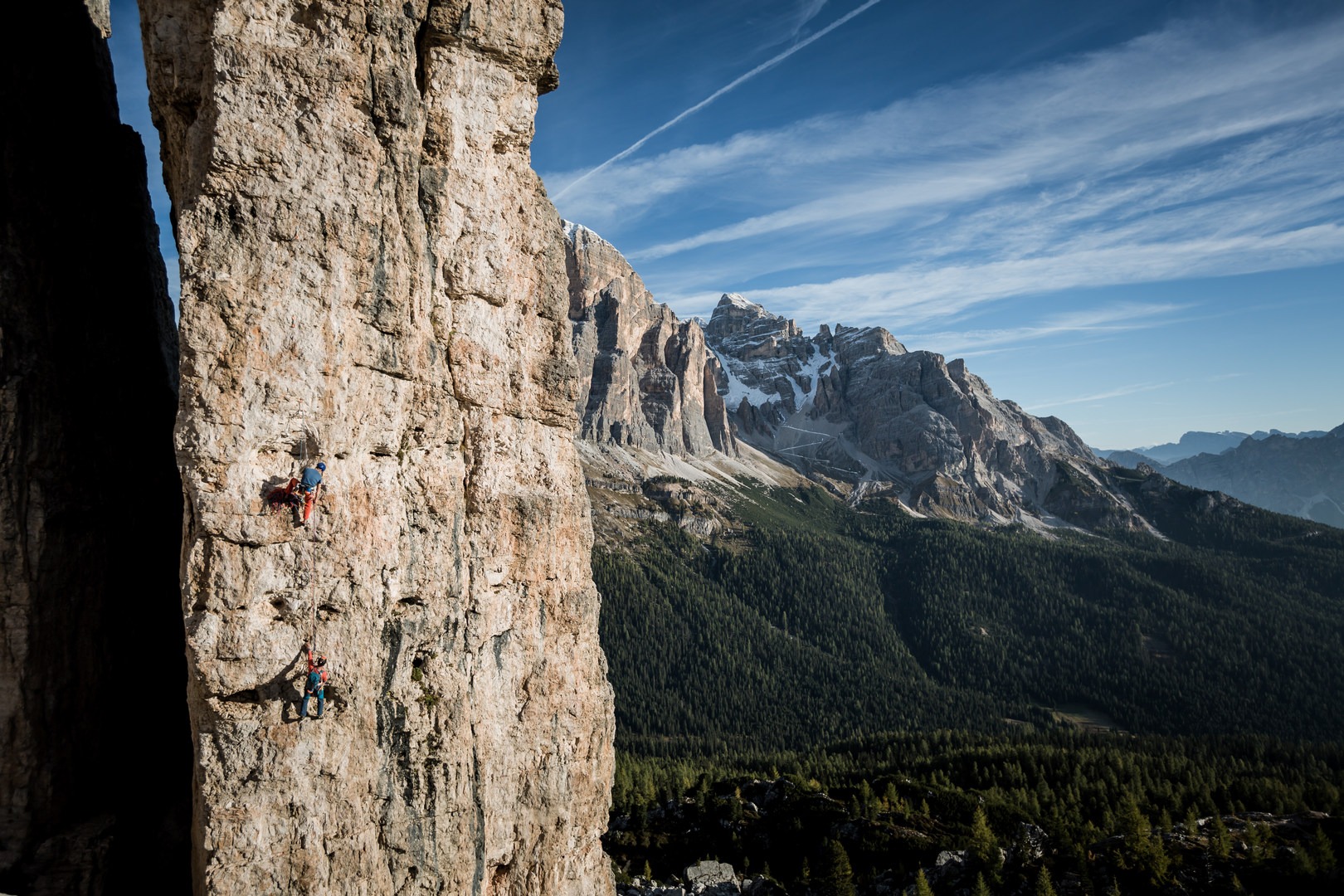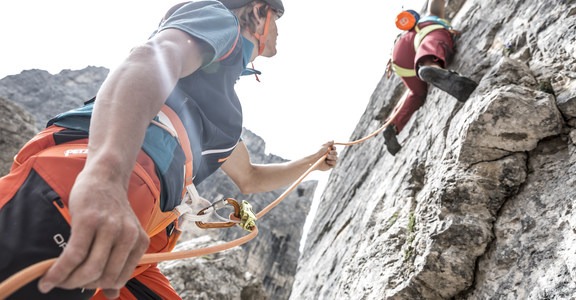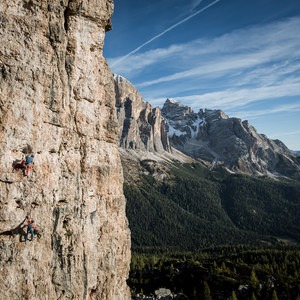Additional equipment for groups
Classic alpine routes often offer sparse protection. They require additional equipment, and knowing how to use it safely is paramount. Traditional climbing equipment such as camming devices, nuts and even pitons are necessary for climbers to build anchors and belays on certain routes.
Camming devices
Camming devices are adjustable, wedge-shaped objects that are used for protection in alpine terrain. They usually work based on a toggle principle to generate a sufficient friction effect on the walls in cracks in the rock. They can then absorb a longitudinal strain (fall.
Cam (Camalot) systems are used in alpine climbing. These are made in three or four segments and have one or two axles. Cam systems with one axle, which have four segments, are usually called “friends.” In a Camalot, the four segments are mounted on two axles. As a result, they can be contracted further and cover a larger crack width with the same size than with single-axle systems. In cam systems, (friends and cams), a flexible bar (extension of the cam) has become standard these days. The devices can thus also be positioned in transverse cracks or holes.
ATTENTION! Camming devices must meet certain standard requirements. Cheap imitation models frequently emerge that do not meet the standard and lead to serious accidents.
Nuts and nut remover
Nuts are non-adjustable, wedge-shaped (conical) camming devices which provide additional protection in alpine terrain and can absorb longitudinal strain. Unlike camming devices, they passively lock into a narrowing in the rock, while camming devices, on the other hand, actively expand in parallel slits.
Nuts can have various basic shapes and are therefore categorized as stoppers, hexentrics or tricams. As with camming devices, they are subject to a certain standard in terms of strength. However, their shapes and sizes may vary.
Climbers also need a nut remover called a nut tool to remove nuts from the crack. This is pressed or hit lightly against the nut in the opposite direction from the main load direction on the nut – usually from below.
Pitons and hammer
Seen as an antique by many climbers, normal pitons (also simply called pitons) are standard on some alpine rock faces – especially in South Tyrol. Although pitons have gone “out of fashion” thanks to bolts and advances in traditional climbing equipment, the South Tyroleans have opposed the refitting of routes with bolts. Bringing along pitons and hammers for alpine rock faces in the Alps can therefore be useful or even a matter of safety – either to reinforce existing hooks or to position new ones. This also allows climbers to be flexible in an emergency situation when a belay point needs to be established.
There are two different types of pitons: soft steel and high carbon steel pitons. High carbon steel pitons are used in prehistoric rock (granite and gneiss), because the cracks usually run in a straight line and the piton does not have to “adapt.” Soft steel pitons are used in limestone because they need to adapt to the course of the crack.
In terms of positioning, soft steel pitons should be able to be inserted one third of the shaft length into the crack, and high carbon steel pitons two thirds of the shaft length.
Knife for removing old rappelling slings
Equipment is often found on alpine rock faces that has been there for years – usually old slings on rappelling points. In such cases, it is important to pay attention to what condition the equipment is in. If necessary, a small knife carried in a climber’s bag can be used to cut worn, old slings from tunnels and pitons if these can no longer be used. In addition, in an emergency a climber’s own rope can be cut off if it has become jammed.
Check out the full series of Safety Academy Lab Rock videos below:
- Alpine basics
- Basic equipment for every climber
- Basic equipment for groups
- Additional equipment for groups
- Storms in the mountains
- Types of rock in the Alps
- Tour planning for alpine climbing
- Packing a backpack correctly
- Rope team procedures
- Knot techniques
- Belay using bolts
- Belay methods
- Anchors
- Coiling a climbing rope
- Rappelling
- What to do in an alpine emergency
- First aid on the mountain
- Rescue techniques while alpine climbing
- Bivouacking in an emergency situation
Visit ORTOVOX’s Safety Academy Lab Rock to view the climbing tutorials in their totality and test your knowledge with their fun and interactive quizzes.
Since the company was founded in 1980 in the south of Munich, ORTOVOX has stood for the highest possible protection during alpine activities. As pioneers in the avalanche safety field, we have played a key role in the development of emergency equipment for the mountains. Innovations such as the double-frequency avalanche transceiver and Smart Antenna Technology, and also targeted training measures, continue to be valuable contributions to making mountain sports a little bit safer and to saving lives.






Comments
Sign In and share them.